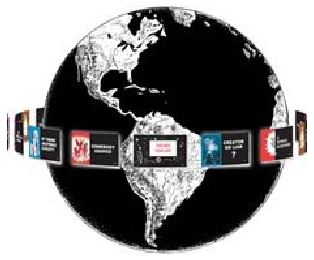Green River Fossil Foolishness
By Thomas Heinze
Evolutionists use the Green River fossilized lake beds as an argument against a young earth. I was recently in Wyoming and turned off to see for myself.
The fish fossils in these old lake beds are spectacular! Many of the fish were fossilized whole, preserving not just bones, but also flesh, skin, and scales.
The old earth explanation is that these animals died and gradually settled to the bottom where the changing seasons added paper thin layers of sediment.
A museum display explains: "For several million years —about fifty million years ago— Fossil Lake gradually filled with sediments, burying and fossilizing dead plants, fish and animals that had sunk to the bottom."
Now ask yourself as I did: If the fish died and drifted down to the bottom where they were slowly covered by paper-thin layers of sediment, why would they fossilize instead of rotting? To be preserved as they are, the fish would have to have been covered rapidly by enough sediment to preserve the fish before predators had eaten the flesh and skin, or bacteria had rotted them away. Even creatures such as birds and bats, which are difficult to fossilize, are found in these deposits.
Most of the fish I saw in the museums were small, the largest being a five foot nine inch gar. If a paper-thin layer of sediment fell on it either "gradually" or twice a year, how long would it have taken to cover this fish? If this fish was about as thick as two packs of computer paper, about 1000 sheets, it would take 500 years to cover it at 2 sheets a year. One paper-thin covering of sediment would certainly not stop a fish like this from rotting in the first six months. Yet, there it was, petrified soft tissue as well as skeleton. On the other hand, most of the fish that fossilized were very small and even worse candidates for fossilization.
The old earth theory is based on darker and lighter biannual layers called varves. But when I looked at the edge of the fossil rock, I was surprised to see that, to the naked eye, there was no difference between the supposedly biannual layers. The deposit is made up of very thin layers which can be split apart, but the layers that I saw were all of the same creamy white limestone and looked to me more like they had been laid down one after another on the same day.
The fossils were also smashed flat. If they were flattened after they fossilized, the vertebrae would have been crushed, also. But the back bones were often clearly visible. This tells me that the fish were covered with a crushing weight of sediment so rapidly that they were flattened and fossilized before they had time to decompose. In fact, in many cases not just bones, but skin, flesh and other soft parts turned to stone after they had been smashed flat, but before decomposition.
Two fish were buried while in the act of eating smaller fish. The larger fish were fossilized with part of the smaller fish, also fossilized, hanging out of their mouths. The evidence shows that these fish were covered so rapidly with such a heavy weight of sediment that the larger fish were never able to finish swallowing the smaller fish.
A number of stingrays are among the Green River fossils. The museum exhibit explained: "Stingrays are not often preserved in the fossil record because their skeletons are composed mainly of cartilage, which disintegrates rapidly upon death." This is further evidence that they were covered and fossilized rapidly.
I think it is clear that the speed at which these fish were covered has been misinterpreted. The "old earth" theory just doesn`t fit the facts. These fish were not buried in paper-thin layers of sediment over a period of several hundreds (or millions) of years.
In his book, Vanishing Proofs of Evolution, Heinze details how, one by one, the evidence of evolution is being discredited. His mini-book, In the Beginning,—Soup? describes how the evolutionist`s arguments are increasingly ridiculous.
- See more articles on related topics:
- Evolution
- Science
- Young Earth
Other Articles from November/December 2008:
- Failed JW Prophecies - Good
Witnessing Points
- Who Really Owns Jerusalem?
- Congressman Says 'Send the Jihadists Home!'
- A Message From Jack Chick
- Homosexual Journalist Admits, 'Gay Lifestyle is a Sewer'
- Chick Mail Bag Nov-2008
- No-Compromise Gospel Film
Now in More Languages
- Tract Passing Tips - November 2008
- Can You Trust Your Bible?
- Vatican Synod Says Bible Not The Only Word of God
More on Evolution:
Products of Interest:
-

Vanishing Proofs of Evolution, The
96 pages
Are your children being taught scientific "proofs" of evolution that have already been disproven?



